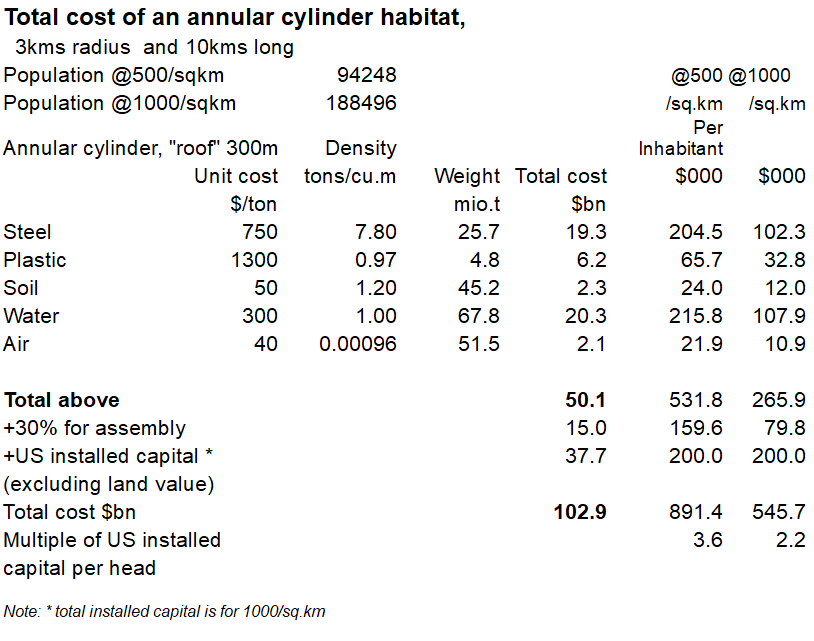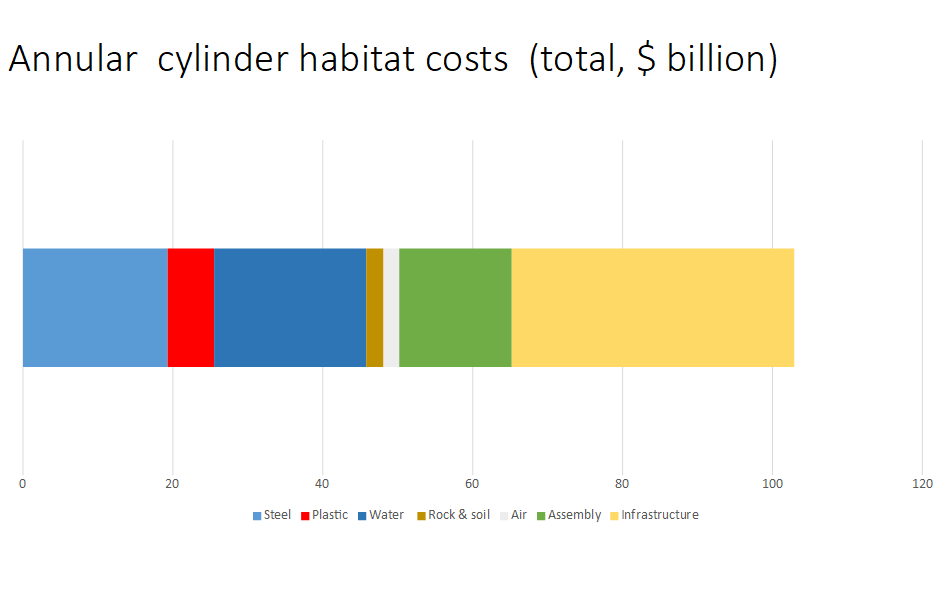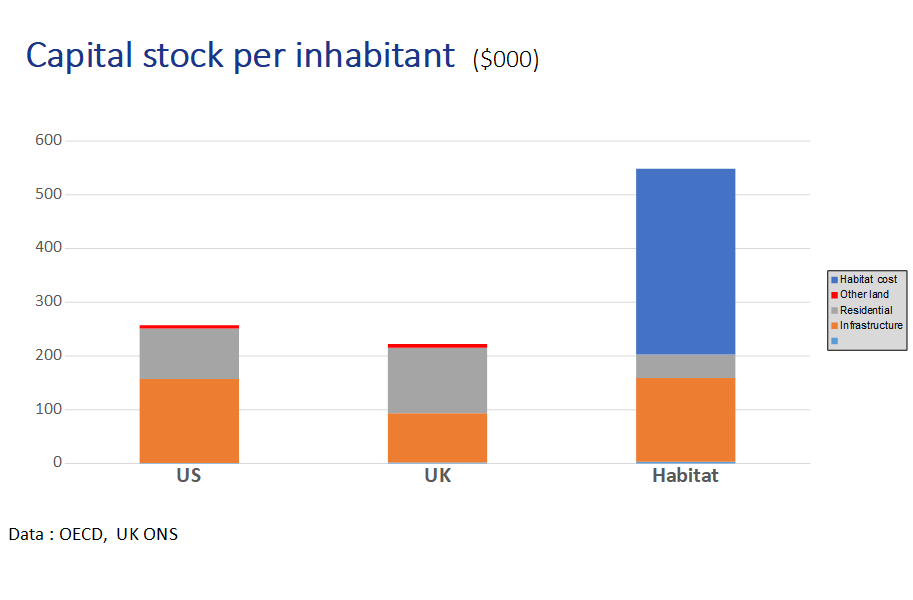Costs per head are acceptable, at high density
The costs of the annular cylinder model are about the same as the simple cylinder completely filled with air, as the cost of the extra steel (annular model) is about the same as that of the extra air (simple model). I think, however, that the annular cylinder is preferable on environmental grounds. The annular version uses 19% of the air of the air volume of the simple model, and we should not deplete the Earth’s atmosphere more than is necessary.

The total cost of the annular cylinder model (excluding installed capital) is around $65 billion. For this you get a self supporting settlement for up to 200,000 people. It would not cost a whole deal less on Earth, if built in one go.
- 1% of world GDP (that is, $780 billion) would cover 8 habitats a year. At a conservative 3% a year growth for the next fifty years, 1% of world GDP in 2066 would cover the costs of building 40 habitats a year.
 The annular cylinder model costs per inhabitant are around 3.6 times the installed capital costs per US inhabitant for 500/sq.km. At 1000/sq.km this reduces to 2.2 times, in the same ballpark as capital costs per person in developed country big cities, where residential and infrastructure costs are higher than the national averages. Moreover this will fall over time as the initial cost of habitat construction is depreciated, but the initial costs are relevant to motivate the construction of additional habitats.
The annular cylinder model costs per inhabitant are around 3.6 times the installed capital costs per US inhabitant for 500/sq.km. At 1000/sq.km this reduces to 2.2 times, in the same ballpark as capital costs per person in developed country big cities, where residential and infrastructure costs are higher than the national averages. Moreover this will fall over time as the initial cost of habitat construction is depreciated, but the initial costs are relevant to motivate the construction of additional habitats.

So habitats are viable and the cost is not astronomical (forgive the pun). But these calculations, as well as purely indicative, are long run, assuming an established mining, manufacturing and transport infrastructure in space. How on Earth (or rather, Space) do we get there? As the apocryphal Irishman replied when asked for directions: “If I were you, I wouldn’t start from here.”
Previous chapter:
Assumptions on cost calculations
Next chapter:
Getting Started: A Starter Habitat